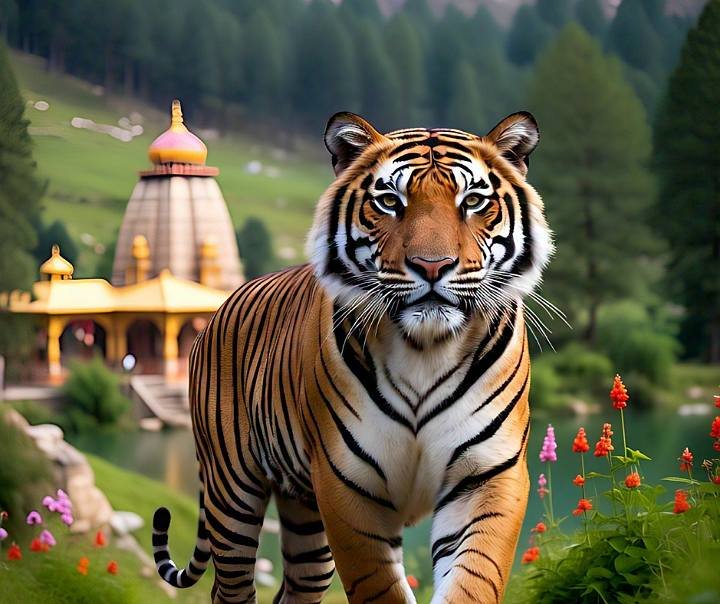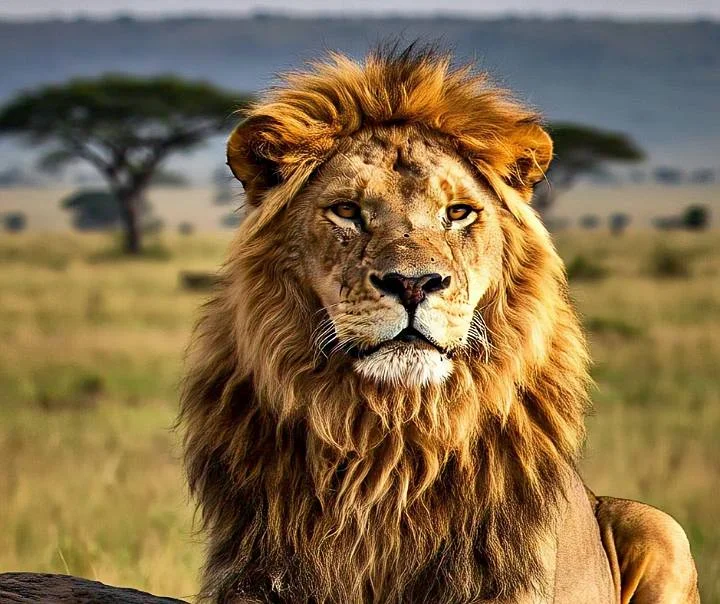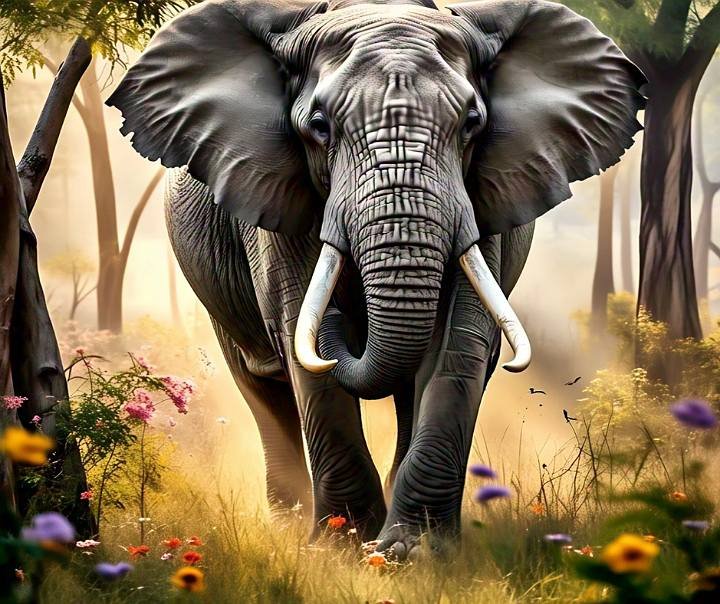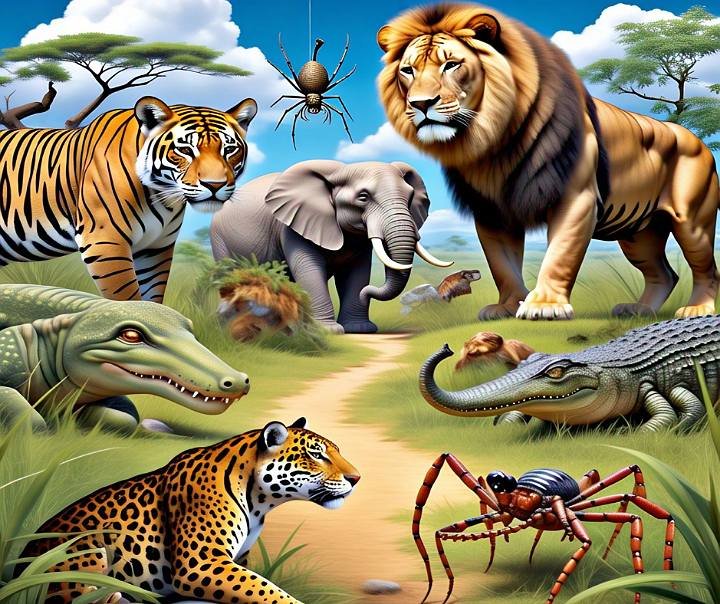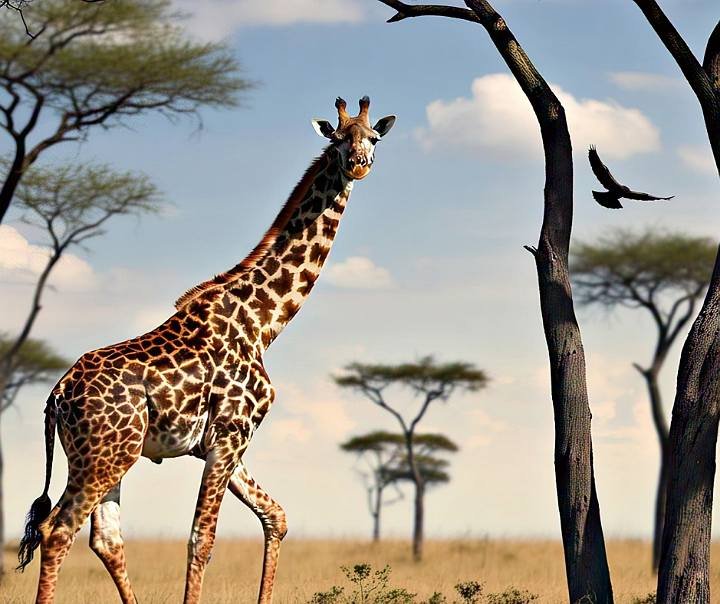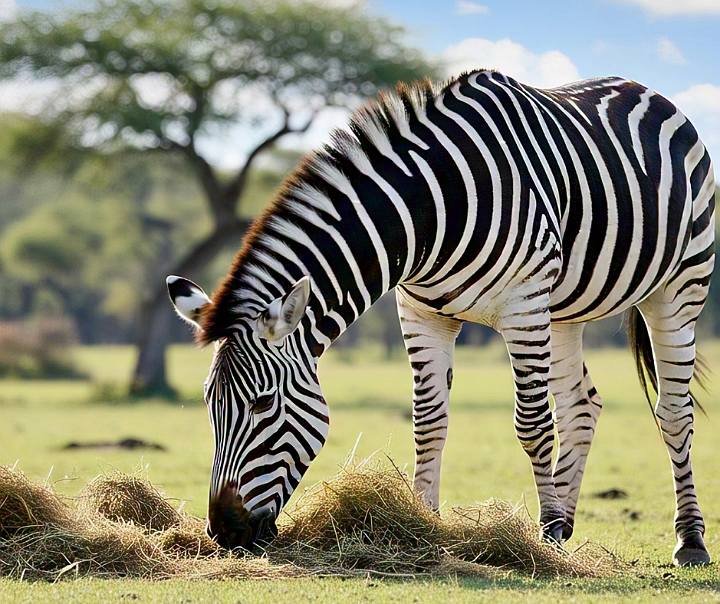Jungle’s Hidden Hunter: The Full Story of the Leopard
Hey there, friends! I’m your Jungle Jhadi buddy, and today we’re diving into a creature that lurks in the shadows of the forest, but when it steps out, it sends chills down your spine. Yeah, bro, the Leopard Facts in English! Just hearing that word conjures up an image of a spotted shadow, right? On junglejhadi.com, we always bring you these thrilling wildlife tales, and this post is no different. It’s like your mate sitting with you over a cup of tea, spilling the entire saga of Indian Leopard Life.
Leopard Wildlife Secrets, or in scientific terms Panthera pardus, is the slyest and most adaptable member of the cat family. It doesn’t roar like a lion or bulk up like a tiger, but with its cunning and strength, it rules the jungle. Guys, if you’re pondering Leopard Hunting Tricks or Leopard Habitat in India, this post is tailor-made for you. We’ll cover everything – from the basics to conservation. And yeah, I’ve broken it into sections for easy reading. Let’s get cracking, mate!
Leopards Infobox
Category | Information |
|---|---|
Scientific Name | Panthera pardus |
Classification | Large Cat (Felidae Family) |
Native To | Widely distributed across parts of Africa and Asia |
Habitat | Extremely versatile; found in rainforests, savannas, mountains, and even near urban areas. |
Diet | Carnivore; consumes medium-sized prey like deer, antelope, hogs, and monkeys. |
Weight | Males: 30 to 90 kg (66 to 200 lb) Females: 20 to 60 kg (44 to 132 lb) |
Distinguishing Feature | Coat covered in unique, irregular, rose-shaped spots called rosettes. |
Key Behaviour | Solitary and primarily nocturnal (active at night). Known for dragging large kills up into trees to protect them from scavengers. |
Speed | Can run up to 58 km (36 mph) |
Conservation Status | Vulnerable |
Leopards Introduction: Who’s This Jungle’s Silent Killer?
Bro, picture a moonlit jungle night. Shadows from the trees are dancing in the silvery light, and suddenly, a dark silhouette slinks by. That’s the Leopard the Silent Hunter! This beast spans from Africa to Asia, and among the big cats, it’s the smallest but the most versatile. Before we dig into Complete Leopard Information, know that it’s part of the Panthera genus, which includes lions, tigers, and jaguars.
Leopard in Indian Jungles isn’t a new name to us. In India, it’s sometimes called a cheetah, but the real cheetah is a different species. Folks, Leopard Adaptability Secrets make it a survivor in jungles, mountains, deserts – anywhere. It’s a lone hunter that strikes in the dead of night and hides by day. According to the IUCN, it’s a vulnerable species, meaning it’s in trouble. But don’t sweat it; we’ll chat about Leopard Conservation Efforts later.

For now, just remember that the Leopard Ecosystem Role keeps the jungle balanced. It controls small critters, preventing overpopulation. Mate, if you’ve ever been on a jungle safari, Spotting Leopard in Wild is the toughest gig. It camouflages so well that even one perched on a tree branch is invisible. Alright, let’s dive deeper.
Leopards Physical Features: How Does This Body Work Its Magic?
Guys, looking at the Leopard Body Structure feels like nature crafted the ultimate predator. First off, those spots – they’re called rosettes, circular with black edges that help it blend into the foliage. Female Leopard Female Weight ranges from 21 to 60 kg, while males hit 37 to 75 kg. Length? From shoulders to tail tip, 1 to 1.9 meters. That tail is long and crucial for balance when it’s scaling trees.
Now imagine the Leopard Strength Power – it can drag prey twice its weight up a tree, yeah bro, up to 100 kg deer! Its muscles are so potent that it clocks speeds of 58 km/h. Teeth and claws? Pure weapons. Canine teeth stretch 2.5 inches, ripping through flesh. Eyes? Perfect for night vision with slit pupils.
Here are some points on Leopard Unique Body Traits, mate:
- Rosettes Patterns: Every Leopard’s Unique Spots are one-of-a-kind, like human fingerprints. Scientists use them for ID.
- Paws for Terrain: Broad paws that grip sand or snow. Leopard Physical Build makes it like an all-terrain vehicle.
- Tail Balance: 60-110 cm long, aiding jumps and climbs.
- Thick Skin Protection: Tough and flexible, shielding from attacks.
- Sense of Smell: 150 times sharper than humans, sniffing out prey from afar.
Bro, all this adds up to the Leopard Physical Strength that bosses the jungle. If you want more on Leopard Anatomy Details, check out the WWF Leopard Page. The photos there are epic.
Leopard Habitat and Distribution: Where Does This Dude Roam?
Now, let’s talk Leopard Living Areas. Folks, the Leopard Habitat Diversity is so varied, it seems like a nomad. From African savannas to Asian Himalayas, it fits anywhere. In India, it’s from Uttarakhand forests to Madhya Pradesh tiger reserves. All in all, found in 70 countries, but numbers are dropping.
On habitats:
- Forests Cover: Dense woods for easy hiding.
- Savanna Grasslands: Most common in Africa.
- Mountain Regions: Up to 5000 meters, like Indian Leopard Mountains.
- Desert Adaptations: Even in Namibia’s deserts.
- Human Proximity Zones: Sometimes near villages, causing issues.
Mate, Leopard Adaptability to Environments lets it go without water and shift spots based on prey. But climate change and habitat loss are shrinking its world. For Leopard Distribution in India, there are about 12,000-14,000, mostly central and southern parts. If maps are your thing, hit up the IUCN Red List Leopard for detailed Leopard Global Spread.
Leopard Diet and Hunting: What Does This Hungry Beast Eat?
Haha, bro, Leopard Food Habits will make you chuckle. It’s an opportunistic hunter – eats whatever’s available! Mostly carnivorous, from small mammals to big deer. Hunts at night ’cause its vision is razor-sharp.
Hunting trick? Ambush! Hides in trees, pounces, throttles the neck. It sprints with speed, but relies on stealth mostly. Diet’s 90% wild prey, though livestock sneaks in sometimes.
Points on What Does Leopard Eat:
- Small Prey Options: Hares, monkeys, rodents – quick snacks.
- Medium Game Hunt: Deer, wild boar, impala.
- Large Prey Challenges: Occasionally young buffalo or lion cubs.
- Birds and Reptiles: Warblers or baby crocs.
- Occasional Fruits: Nah, bro, but it’ll munch fruit if meat’s scarce.
Folks, a Leopard Weekly Diet needs 3-4 kg of meat a week. And yep, it stashes kills in trees to keep other animals away. Leopard Hunting Strategies make it seem like a spy. For more deets, peep National Geographic Leopard.
Leopard Behavior Patterns: Lone Wolf but Super Smart
Mate, Leopard Solitary Nature feels like an introvert human. Mostly solo – except mating season or with cubs. Marks territory with urine and scratches, spanning 10-30 sq km. Females have smaller ones, males bigger.
Some behavior bits:
- Climbing Expertise: Tree pro, hauls prey up high.
- Swimming Skills: Solid swimmer, crosses rivers.
- Social Interactions: Males and females meet only for breeding. Mom teaches cubs.
- Defense Mechanisms: Roars or growls if threatened, but prefers peace.
- Nocturnal Activity: Sleeps by day, active at night.
Bro, Leopard Daily Routine is so clever it thrives near humans too. But that behavior sparks trouble – village raids. To grasp Leopard Behavioral Traits, read Animal Diversity Web Leopard.
Leopard Subspecies Variety: How Many Types of Leopards Are There?
Guys, Leopard Subspecies List isn’t just one flavor – it’s a whole buffet of forms, each adapted to its corner of the world like a custom survival kit. There are nine recognized subspecies out there, and while the total global leopard count sits around 131,300 individuals these days, the breakdown shows a mix of thriving packs and teetering-on-the-edge loners.
Populations are shifting with conservation pushes and threats like habitat crunch and poaching, so numbers from 2025 surveys paint a dynamic picture – some rebounding, others clinging on. Let’s unpack them one by one, mate, with the freshest estimates, unique traits, habitats, and why they’re fighting to stick around. I’ll throw in some cool quirks too, so you get the full vibe.
African Leopard (Panthera pardus pardus)
This is the OG, the most widespread and numerous of the bunch, calling the shots across sub-Saharan Africa’s vast savannas, woodlands, and even coastal scrub. Latest tallies put their numbers at a hefty 250,000 to 400,000 strong, making up the lion’s share of the global total – think of them as the backbone holding down the continent’s wild balance.
They’re adaptable pros, from the open plains of Kenya’s Maasai Mara to the misty forests of the Congo Basin, but fragmentation from farms and cities is splitting their turf. Fun quirk: These guys have the boldest rosettes, almost like nature’s camouflage tattoos, helping them vanish into tall grass during daylight siestas. South Africa alone boasts the continent’s biggest cluster, proving protected parks can be game-changers.
Indian Leopard (Panthera pardus fusca)
Ah, our desi star – India’s own stealth ninja, prowling the subcontinent’s diverse landscapes from the steamy Western Ghats to the arid scrub of Rajasthan. Clocking in at about 13,874 individuals as per the most recent 2022 census (with 2025 updates suggesting steady hold), they’re the second-largest group, concentrated in hotspots like Madhya Pradesh’s tiger reserves where over 3,900 roam.
Indian Leopard Features shine with a compact build (males up to 77 kg), a thicker coat for those humid nights, and a knack for urban edges – yeah, they’ve been spotted chilling near Mumbai’s skyscrapers, munching on stray dogs. But human sprawl means more clashes, so camera traps and corridors are key to their survival. Imagine a leopard slipping through tea plantations in Assam – that’s their everyday hustle.
Persian Leopard (Panthera pardus tulliana)
These rugged mountaineers rule the jagged peaks and valleys of the Middle East and Central Asia, from Iran’s Alborz Mountains to Armenia’s wilds. The wild count hovers at 750 to 1,044 total, with 500-700 in Iran alone and a smattering of up to 100 in Turkmenistan – that’s fewer than 1,100 adults overall, earning them an Endangered badge.
They’re built stocky for high-altitude chills, with paler coats blending into rocky terrains up to 4,000 meters. Threats? Border conflicts and livestock raids have them dodging bullets, but rewilding programs are releasing captives back into the mix. Quirk alert: They’re vocal pros, using eerie saw-like calls to claim turf across vast, echoey canyons – like the ghosts of ancient Persian tales come alive.
Arabian Leopard (Panthera pardus nimr)
The pint-sized powerhouse of the desert, this one’s the smallest subspecies at just 20-30 kg, perfectly tuned for the scorching sands of the Arabian Peninsula. Heartbreakingly, only 100-120 remain in the wild (70-84 mature), split between Oman’s rugged wadis and Yemen’s fractured hills, with possible extinction in Saudi Arabia – Critically Endangered doesn’t even cover the urgency.
Saudi’s pumping resources into breeding and release, aiming to boost that tally through royal reserves. Their sandy-gold fur with sparse spots is desert camo gold, and they can go weeks without water by getting it from prey like rock hyraxes. Picture a tiny shadow darting between dunes at dusk – that’s pure survival poetry, but every lost one tips the scale.
Snow Leopard?
Hold up, mate – that’s no relation! The snow leopard (Panthera uncia) is a separate icy icon, not part of our spotted crew. Don’t get ’em twisted; one’s a high-altitude ghost, the other’s our versatile jungle prowler.
Amur Leopard (Panthera pardus orientalis)
Far East’s comeback kid, these frosty fighters haunt the birch forests and taiga of Russia’s Primorye region and China’s borderlands. From a dire low of under 30 in the early 2000s, they’ve clawed back to 128-130 adults and sub-adults as of 2023-2025 surveys – the highest in decades, thanks to anti-poaching patrols and habitat links.
Denser coats (up to 7 cm thick) ward off -40°C winters, and they’ve hit record densities of 1.86 per 100 sq km in monitored zones. They’re speedy sprinters on snow, clocking 60 km/h bursts to nab sika deer. Success story vibes: Camera traps caught more cubs this year, signaling breeding booms – proof that fences, fines, and forests can flip the script.
Central Asian Leopard
Blurring lines with the Persian kin (often lumped under tulliana or saxicolor), these elusive wanderers stake claim in the steppes and mountains of Kazakhstan, Uzbekistan, and Mongolia’s fringes. Pinning numbers is tricky due to vast, under-surveyed ranges, but estimates tag low hundreds – maybe 200-500 scattered in pockets, declining from habitat hits and herder conflicts.
They’re the bridge between Persian and Amur worlds, with variable coats from tawny to grayish for rocky blends. Recent transboundary parks are stitching their turf back together, but golden eagle traps and snow leopard rivalries add drama. Quirk: They stash kills in caves, turning them into winter larders – smart stockpiling for lean times in the Silk Road shadows.
Javanese Leopard (Panthera pardus melas)
Java’s lone apex survivor, squeezed into Indonesia’s volcano-dotted rainforests and tea estates. Wild estimates range 188-571 mature individuals across 22 fragmented pockets – around 350 total, but trending down fast from palm oil sprawl. At 25-40 kg, they’re sleek and shadowy, with melanistic (black) variants up to 40% in some areas, giving that panther mystique.
Recent camera trap hauls in Meru Betiri National Park lit up conservation hopes, but road kills and snares are silent killers. They’re Java’s ecosystem engineers, keeping wild boar in check – lose ’em, and the island’s balance tips. Imagine a black blur leaping through misty craters at dawn; that’s the raw edge they’re defending.
Sri Lankan Leopard (Panthera pardus kotiya)
The island’s tawny guardian, with rusty-gold coats and tighter rosettes tuned for Sri Lanka’s dry zone forests and hill country. Populations clock 700-1,000 total (under 800 mature), concentrated in Yala and Kumana parks where densities hit 15 per 100 sq km – Vulnerable, but stable in strongholds.
They’re bolder than most, sometimes eyeing camp crocs for lunch, and melanism runs high (up to 12%). Poaching for skins fuels the fire, but community eco-tourism is flipping locals into allies. Quirk: Cubs here play-fight with mom over kills, honing skills amid ancient ruins – like leopards guarding a lost kingdom.
Each subspecies tells its own thriller – from desert dashes to Siberian snow stalks – but shared foes like us humans mean Different Leopard Types are a biodiversity wake-up call. High densities in Africa contrast the razor-thin margins elsewhere, underscoring why targeted saves (think India’s censuses or Russia’s rewilds) matter.
If we amp up corridors and crack down on trade, these spotted legends could roar on. For maps and deeper dives, hit Wikipedia Leopard Subspecies. Which one’s got you hooked, guys? Drop your thoughts!
Leopard Reproduction Cycle: How Does the Family Grow?
Now onto Leopard Family Life. Female Leopard Female Reproduction births 2-4 cubs every 15-24 months. Gestation: 90-105 days. Cubs born blind, eyes open in 10 days. Mom nurses for 8 weeks, then teaches hunting.
Life cycle stages:
- Birth Stage: 500 grams at birth.
- Childhood Learning: 2 years with mom, learning hunts.
- Adulthood Maturity: Mature at 2-3 years, lives 10-15 in wild.
- Old Age Decline: Hunts less, becomes prey itself.
Mate, Leopard Cubs Cute Moments are adorable – spotted fluffballs playing. But only 50% survive. Leopard Life Cycle Stages is full of struggle. Videos on PBS Nature Leopard Facts.
Leopard Conservation Status: This Hunter’s in Danger – What Can We Do?
Bro, serious talk now. Leopard Vulnerable Status – population down 50% in three generations. Threats?
- Habitat Loss Issues: Deforestation.
- Poaching Threats: For skins and parts.
- Human-Wildlife Conflicts: Livestock kills in villages.
- Climate Change Impact: Fewer prey.
In India, Project Leopard India is underway. NTCA and WWF team up. Leopard Protection in India – good news: numbers up in national parks.
What can you do?
- Donate to WWF: Support the cause.
- Spread Awareness: Share on socials.
- Responsible Tourism: Eco-friendly safaris.
- Support Policies: Push for better laws.
Folks, if we don’t act, Leopard Extinction Risk becomes reality. Read AWF Leopard Conservation.
Fun Leopard Facts: Whoa, We Didn’t Know That!
Let’s lighten up with Amazing Leopard Trivia. Mate, these’ll blow your mind:
- Leopard Jump Height: Leaps 6 meters high!
- Water Repellent Coat: Fur repels water.
- Courtship Gifts: Males bring dead prey as gifts to woo females.
- Versatile Diet: Eats over 100 species.
- Black Panther Secret: Just a melanistic leopard!
- Rarest Subspecies: Amur’s the fastest but scarcest.
- Strength per Kilo: Stronger than lions pound-for-pound.
- Alert Sleep: Stays vigilant even snoozing.
- India’s Leopard Population: Most leopards in India.
- Cubs Mimicry: Little ones mimic mom for hunt practice.
Leopard Interesting Facts scream nature’s genius. More at ThoughtCo Leopard Facts.
Leopard’s Top Questions Answered – Hey Folks, You Gotta Know This!
Guys, the leopard world is so thrilling that everyone’s got questions popping up. On junglejhadi.com, we’ve whipped up this FAQs section to make Leopard Facts in English even easier to grasp. These are the queries folks punch into Google, like Leopard in India or Leopard Hunting Tricks, and the answers are straight-up buddy style. Got more? Hit the comments, bro! Let’s roll.
1. What is a Leopard and How is it Different from a Lion or Tiger?
Mate, the leopards (Panthera pardus) is the cat family’s slyest predator – compact size, spotted coat, and super adaptable. Lions are social, live in prides, and roar loud; tigers are the biggest with stripes. Leopards? Total solo acts, night hunters that fit anywhere – jungle to desert. In Leopard vs Tiger vs Lion, leopards win the adaptability game!
2. What’s the Leopard Population in India and Where are They Mostly Found?
Bro, the latest 2022 census clocks about 13,874 leopards in India, with 2025 updates showing steady vibes. Highest numbers in Madhya Pradesh (3,900+), Maharashtra, and Karnataka. Check Leopard Distribution in India – tiger reserves like Kanha and Bandipur are their hotspots. But urban edges mean more clashes.
3. How Fast Can a Leopard Run and How Does it Hunt?
Whoa, Leopards Speed and Hunting Tricks – it hits 58 km/h on short bursts! Hunts ambush-style: hides in trees, pounces (6-meter high jumps!), chokes the neck. What Does Leopard Eat? Deer to monkeys, but nocturnal only. Smart cookie – sometimes steals lion kills too!
4. How Many Subspecies of Leopards Are There and Which is the Rarest?
Folks, nine main subspecies, like African, Indian, Amur. The Rarest Leopards Subspecies is the Amur leopard – just 128-130 left on the Russia-China border, but conservation’s turning it around. Different Leopard Types each have their flair: Indian’s compact with dense fur, Arabian’s the tiniest. Snow leopard? Totally separate, dude!
5. What’s a Leopard’s Lifespan and How Do They Raise Cubs?
In the wild, Leopards Life Cycle spans 10-15 years, captivity hits 20+. Females birth 2-4 cubs after 90 days gestation. Leopard Cubs Cute Moments – eyes open in 10 days, mom teaches hunting for 2 years. But only 50% cubs make it, thanks to predators. Family life’s a grind!
6. Why is the Leopard Endangered and How is Conservation Happening?
Mate, Leopards Vulnerable Status – populations down 50% from habitat loss, poaching, and human-wildlife clashes. In India, Project Leopard India is rolling with NTCA and WWF partnerships. Good news: Numbers up in national parks. What can we do? Spread awareness, go responsible tourism – join Leopard Conservation Efforts!
7. What’s the Difference Between a Black Panther and a Leopards?
Haha, no difference, bro! Black Panther Secret – it’s a melanistic leopard, extra melanin makes it black. Spots show in light. Up to 40% black variants in Java or Sri Lanka. Amazing Leopard Trivia at its mind-blowing best!
8. What to Do if a Leopard Enters Your Home or Village?
Serious tip: Stay calm but alert. To dodge Human-Wildlife Conflicts, keep lights on, secure pets. If spotted, back away, no eye contact. Call local forest dept. India’s Leopard Protection in India has relocation programs – prevention’s the pro move!
9. Why is the Leopard Important for the Jungle Ecosystem?
Bro, Leopards Ecosystem Role – top predator keeping small critters in check, stopping overpopulation. Too many deer? Trees get wrecked. Leopard’s Role in Nature is balance boss – lose it, and the chain reaction hits hard!
10. Best Places to Spot Leopards?
For Spotting Leopards in Wild, try India’s Ranthambore, Jim Corbett, or Periyar National Park. Africa’s Serengeti rocks too. Guided safaris, dawn/dusk best. Follow rules, no disturbing – Responsible Tourism all the way!
Save the Leopards, Save the Jungle!
Guys, that was the full Leopards Complete Guide in English. Hope the Detailed Leopard Information hit the spot. More like this on junglejhadi.com. Remember, Leopard’s Role in Nature isn’t just an animal – it’s ecosystem glue. If Leopards Story in Wild hooked you, drop a comment. Share it, and join the jungle-saving squad. Catch you in the next post, bye bro!
Read more :
